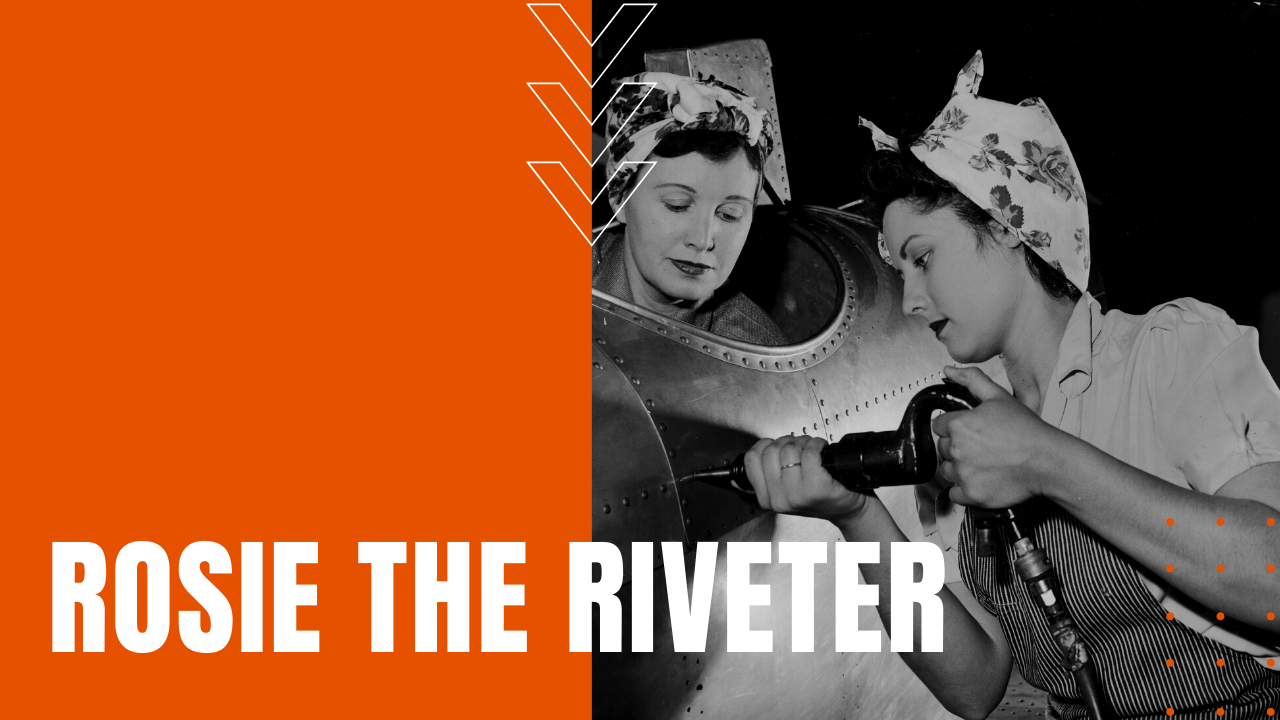Rosie the Riveter

With able-bodied American men fighting the war in Europe and the Pacific, by 1943, women stepped up to fill the labor vacuum, making up one-third of the American labor force during World War Two.
How Many Women Worked During WWII?
Twenty million women went to work outside the home, not just at typewriters and sewing machines, but in jobs that had long been considered the exclusive domain of men.
During the war, almost 15,000 workers were killed or permanently disabled in industrial accidents, while another three million were injured. It was a dangerous environment for both men and women alike, but that was something the government and newsreels didn’t want to talk about. Instead, the emphasis was on patriotism and determination, and in a manner peculiar to the times, sex.
Two Versions of Rosie the Riveter
Rosie the Riveter, as women workers became known, was iconized first in 1942 by Westinghouse artist J. Howard Miller, whose poster showed a determined woman under the slogan, “We Can Do it!”
Norman Rockwell’s 1943 Saturday Evening Post cover further cemented women’s vital role in the war effort. Rockwell’s Rosie was brawny and tough, and when compared to Michelangelo’s Sistine Chapel depiction of the Prophet Isaiah, the likenesses between Rosie and Isaiah become clear.
The mythology behind Rosie the Riveter was further amplified in a 1943 song by Red Evans and John Jacob Lobe, which cemented the patriotic dedication of women supporting the war effort through their own labor and determination.
Most working Rosies didn’t realize it at the time, but this first mass wave of women in the workforce was the beginning of the women’s liberation movement, proving that women could do a man’s job and hold their own in any work environment.
Since the war’s end, many Rosies recall that they felt good about what they were doing, along with a special bond between the women, who each felt that they were doing their part to bring an end to Nazi and Japanese aggression.
